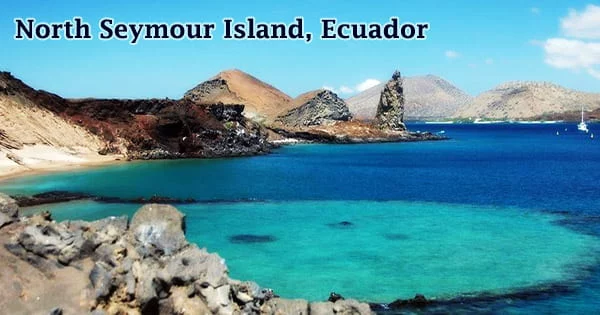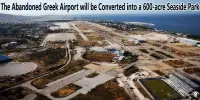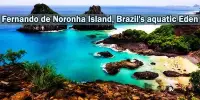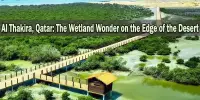North Seymour (Spanish: Isla Seymour Norte) is one of the most important marine bird fishing grounds in the world. It’s a small island in the Galápagos Islands near Baltra Island. Many tourists and ornithologists visit this location to see the Galapagos Islands’ stunning and diversified bird population. Uplift of a submarine lava structure created it. Low, bushy vegetation covers the entire island.
It’s a little island, measuring about 0.73 square miles (or 1.9 square kilometers) in size. North Seymour is not a volcano, unlike many of the Galapagos’ other islands. Lord Hugh Seymour, an English lord, was the inspiration for the island’s name. During the 18th century, this English gentleman was born into one of England’s wealthiest families and was a daring and pioneering Royal Navy officer. Blue-footed boobies and swallow-tailed gulls can be seen in huge numbers on this island.
Along with Baltra (also known as South Seymour) and the northeastern section of Santa Cruz, North Seymour was formed by a succession of subsurface lava uplifts, resulting in flat plateaus. It is home to one of the world’s largest populations of beautiful frigatebirds (Fregata magnificens) as well as a small but rising population of Galápagos land iguanas (Conolophus subcristatus).
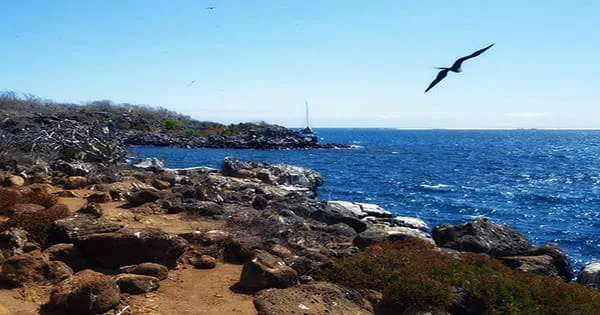
A wonderful visitor trail stretches for 1.2 miles (roughly two kilometers) across the island, inland before reaching the coast. The stock for the Galápagos land iguana captive breeding program is descended from iguanas translocated from adjacent Baltra Island to North Seymour Island in the 1930s by Captain G. Allan Hancock.
The island’s highest point is only 92 feet (28 meters), indicating that North Seymour Island is very flat. According to a 2014 census conducted by the Galapagos National Park (GNP), North Seymour presently has almost 2,500 land iguanas. Blue-footed boobies, swallow-tailed gulls, common noddies, and frigatebirds all have considerable populations on this island.
Rather than being volcanic, North Seymour was formed by seismic uplift. The island has a flat shape with cliffs barely a few meters from the shoreline, where tropicbirds and swallowtail gulls roost on ledges. There is also a Palo Santo forest on the south coast of Seymour, which is home to birds and provides a wonderful view of the strait that connects Bartolomé and Seymour.
Prior to the rat eradication activities on Pinzón and Rábida Islands, introduced rats were removed from the island as a test project. Rats may repopulate North Seymour in the future, swimming from Baltra to Mosquera to North Seymour. The island is bustling with activity.
A passing sea lion or marine iguana may need one to give way while visiting the island. Off the coast, pelicans and swallow-tailed gulls feed, and Nazca boobies can be spotted during certain seasons. It is an uninhabited island whose formation is linked to a rising of the undersea layer, resulting in a highly worn flat rock surrounded by dangers.
The marine base is still visible here, with massive rocks and shells strewn about. Hundreds of sharks, including Tiger Sharks, Galapagos Sharks, Reef Sharks, and others, swim along the island’s shore. The marine richness in this snorkeling and diving location is enhanced by the Upwelling Phenomenon, which is generated by cold currents.
The trail on North Seymour has a short loop and a longer loop, giving tourists plenty of chances to see the Galapagos’ largest colony of beautiful frigatebirds, blue-footed boobies, and land iguanas, as well as sea lions and marine iguanas along the coast.
Marine iguanas on North Seymour have been recorded consuming land flora in the past, which is a rare activity for this species. This island is a haven for breeding birds, with one of the greatest populations of blue-footed boobies and superb frigate birds in the world.
Blue-footed boobies can be observed giving each other gifts, whistle and honk, stretch their necks towards the sky, open their wings, and dance to show off their dazzling blue feet during their mating ritual.
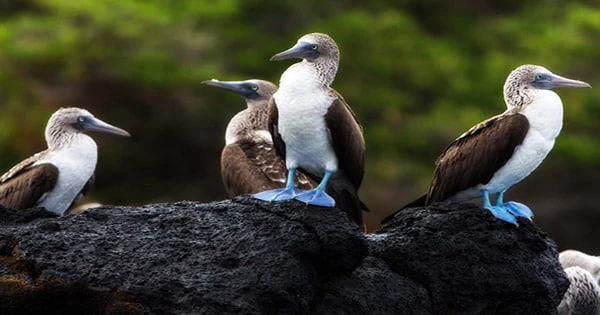
Observing the majestic frigate bird, who displays his bright red pouch at various times of the year in the hopes of finding a mate, is another amazing North Seymour Island Highlight. North Seymour Island has superb frigate birds, therefore this is a fantastic site to witness this occurrence.
Land iguanas were acquired from North Seymour Island, where they were first introduced in the 1930s and have since grown to a population of over 5,000, despite a scarcity of food. It’s a tectonic movement. In terms of geology, it is the result of the earth’s crust rising above sea level, resulting in a kaleidoscope of geologic formations. The island cliffs plunge abruptly into the sea as a result of this event.
Another landmark of North Seymour Island is the Mosquera visitor site, which is technically not on North Seymour Island but is located between Baltra and North Seymour. It is home to one of the greatest sea lion populations in the world, and its sandy beaches provide visitors with the ideal opportunity to see sea lion behavior. There are also lava gulls, coastal birds, and Sally lightfoot crabs to be seen.
Any time is a good time to visit North Seymour Island. This island’s biodiversity is primarily avian, making it a wonderful destination for birdwatchers and ornithologists. Palo Santo or holy stick trees (a species of sandalwood known for its pungent perfume) and gray saltbush are strewn across the ground among white-splashed rocks.
There are three dive sites in the North Seymour area: one on the line from the northeast corner of Baltra to Mosquera, one on the line from Mosquera north to the southeast corner of North Seymour, and one on the line from the northeast corner of North Seymour to the northeast zone of North Seymour. The island is uninhabited; hence, there are no North Seymour Hotels or North Seymour Restaurants for visitors or tourists.
